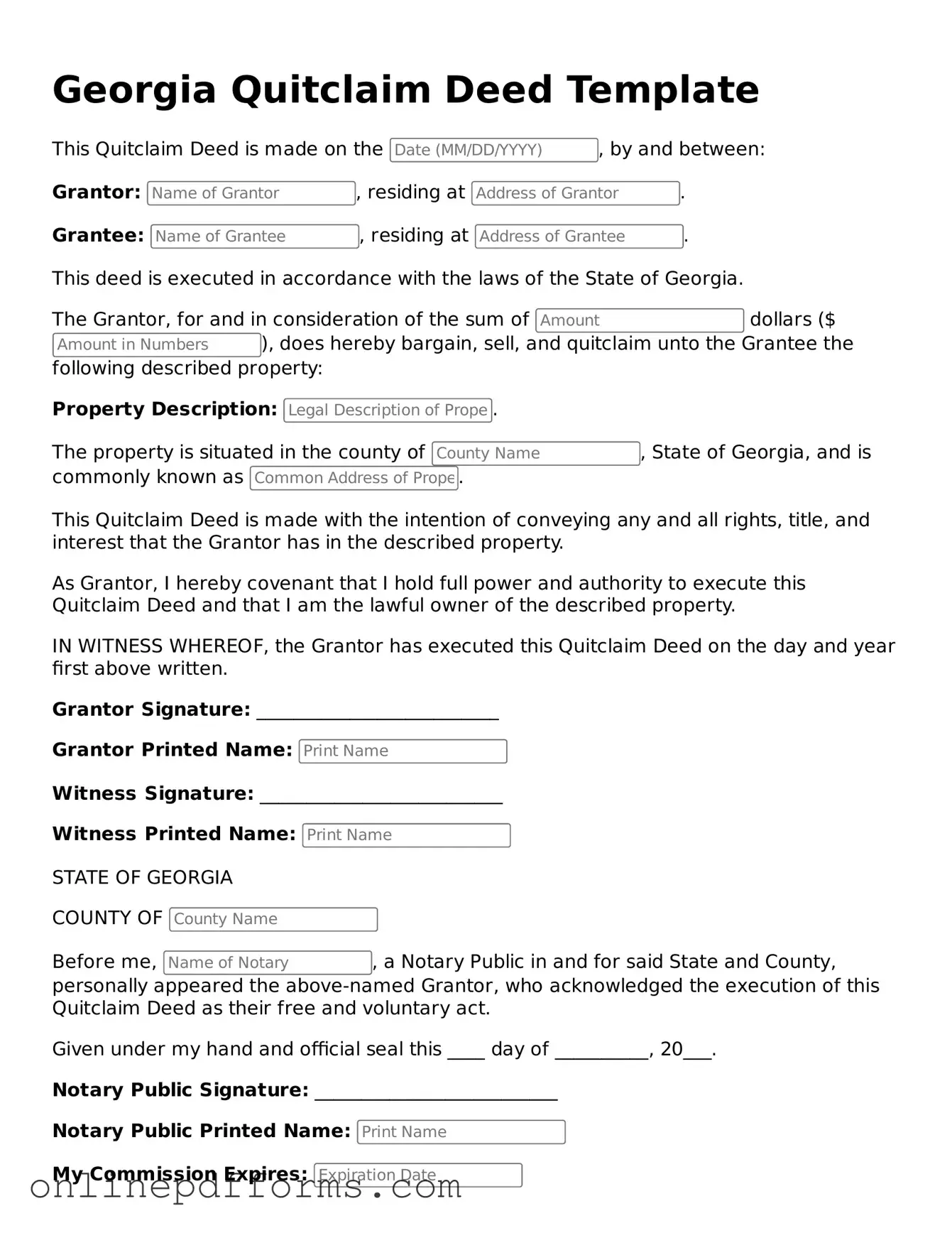A Warranty Deed is a document that guarantees the grantor holds clear title to the property and has the right to sell it. Unlike a Quitclaim Deed, which offers no such guarantees, a Warranty Deed provides protection to the buyer against any future claims on the property. This assurance can be crucial for buyers seeking peace of mind in their investment.
A Bargain and Sale Deed transfers property ownership without any warranties against encumbrances. Similar to a Quitclaim Deed, it conveys the interest of the seller but does not guarantee that the title is free from defects. Buyers should be aware that while they receive ownership, they may still face risks regarding the property's title.
An Executor’s Deed is used when a property is transferred from a deceased person's estate. This document is similar to a Quitclaim Deed in that it conveys ownership without guarantees. It is often used to distribute property according to the wishes expressed in a will, providing a straightforward way to transfer assets after death.
A Trustee’s Deed is executed by a trustee to convey property held in a trust. Like a Quitclaim Deed, it transfers ownership but does not provide any warranties regarding the title. This document is important for managing assets in a trust and ensuring that beneficiaries receive their intended inheritance.
A Deed in Lieu of Foreclosure allows a borrower to transfer property to a lender to avoid foreclosure. This document is similar to a Quitclaim Deed as it relinquishes ownership without any warranties. It can be a beneficial option for borrowers facing financial difficulties, providing a way to settle debts without the lengthy foreclosure process.
A Special Purpose Deed is often used for specific transactions, such as transferring property between family members or for tax purposes. It shares similarities with a Quitclaim Deed in that it conveys interest without warranties. This type of deed can simplify the transfer process for unique situations, making it easier for families to manage property.
A Mineral Deed transfers rights to minerals beneath the surface of a property. Similar to a Quitclaim Deed, it conveys interest without guaranteeing ownership of the surface land. This type of deed is essential for those looking to sell or lease mineral rights separately from the property itself.
A Bill of Sale is used to transfer ownership of personal property, such as vehicles or equipment. While it is not a real estate document like a Quitclaim Deed, it shares the characteristic of transferring ownership without warranties. This document is crucial for ensuring that buyers receive clear ownership of personal items, similar to the way Quitclaim Deeds transfer property interests.
A Leasehold Deed conveys the right to use and occupy property for a specified period. While it differs from a Quitclaim Deed in that it does not transfer ownership, it does share the aspect of limited rights. Both documents facilitate the transfer of interests in property, though in different contexts.
Finally, a Power of Attorney can grant someone the authority to act on behalf of another in real estate transactions. While it does not transfer property itself, it can enable the execution of a Quitclaim Deed. This document can be vital for individuals unable to manage their affairs personally, ensuring their property interests are handled according to their wishes.
